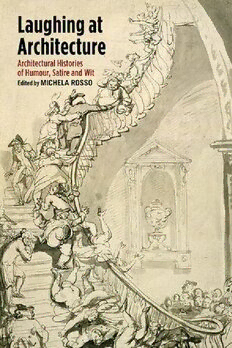
Laughing at Architecture: Architectural Histories of Humour, Satire and Wit PDF
292 Pages·2019·48.957 MB·English
Most books are stored in the elastic cloud where traffic is expensive. For this reason, we have a limit on daily download.
Preview Laughing at Architecture: Architectural Histories of Humour, Satire and Wit
Description:
In a media-saturated world, humour stands out as a form of social communication that is especially effective in re-appropriating and questioning architectural and urban culture. Whether illuminating the ambivalences of metropolitan life or exposing the shock of modernization, cartoons, caricature, and parody have long been potent agents of architectural criticism, protest and opposition.In a novel contribution to the field of architectural history, this book outlines a survey of visual and textual humour as applied to architecture, its artefacts and leading professionals. Employing a wide variety of visual and literary sources (prints, the illustrated press, advertisements, theatrical representations, cinema and TV), thirteen essays explore an array of historical subjects concerning the critical reception of projects, buildings and cities through the means of caricature and parody. Subjects range from 1750 to the present, and from Europe and the USA to contemporary China. From William Hogarth and George Cruikshank to Osbert Lancaster, Adolf Loos’ satire, and Saul Steinberg’s celebrated cartoons of New York City, graphic and descriptive humour is shown to be an enormously fruitful, yet largely unexplored terrain of investigation for the architectural and urban historian.
See more
The list of books you might like
Most books are stored in the elastic cloud where traffic is expensive. For this reason, we have a limit on daily download.
